Serruria furcellata
Serruria furcellata R.Br.
Family: Proteaceae
Common names: Kraaifontein spiderhead (Eng.)
Introduction
This critically endangered spiderhead is being squeezed from its home by urbanization near greater Cape Town.
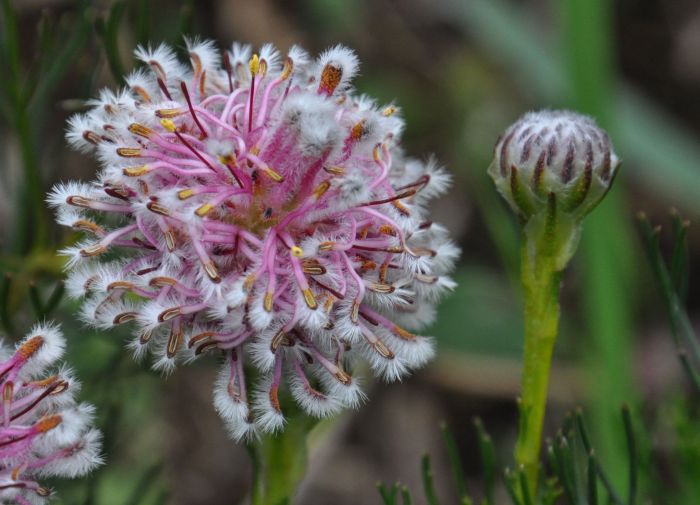
Description
Description
Serruria furcellata is a multi-stemmed, resprouting, erect shrub reaching a height of 0.5 m and spanning 1 m across. The dissected leaves, which are distinctive of this species, are hairless and bright green. The plant produces a solitary, sweet-scented, pink flowerhead and flowers in spring to early summer (from August to October). The seeds are released within two months of flowering.
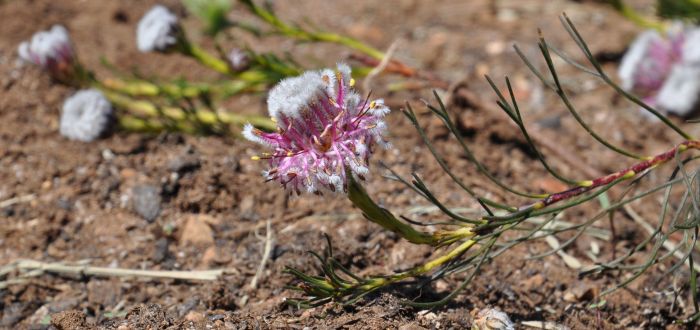
Conservation Status
Status
The plant is assessed as Critically Endangered (CR) by the Red List of South African Plants. The wild population has all but disappeared with only one plant known to remain in the wild. It has lost its range and habitat because of urban and industrial expansion, invasive alien plants, bush clearing, mowing, inappropriate fire management, alien ants, increased mole rat activity and trampling.
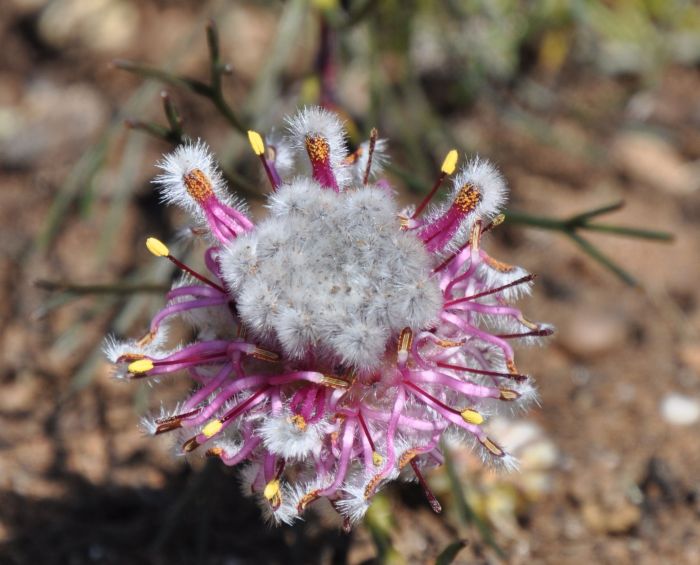
Distribution and habitat
Distribution description
Serruria furcellata grows in acid, sandy soils at low altitudes between 50-310 m on the Cape Flats. The plant experiences typical Cape Flats weather which is cold and wet during winter and hot, dry and windy during the summer months. The Kraaifontein spiderhead is nearly extinct in its natural habitat in Kraaifontein and Brackenfell. According to Rebelo (1995), in 1987 fewer than 250 plants remained at Northpine on the Cape Flats, and the Elandskloof Mountain population is restricted to a few scattered plants. This is mainly because of urbanization and industrial areas being established in the area.
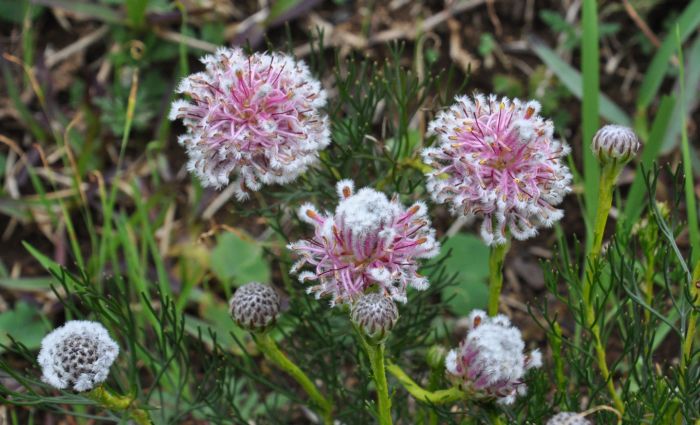
Derivation of name and historical aspects
History
The genus was named after J. Serrurier, a professor of botany at the University of Utrecht in the early eighteenth century. The species name furcellata means small fork, and refers to the distinctively forked leaves. The common name derives from the area it originally existed, Kraaifontein. Urbanization is threatening other members of this genus, including Serruria cyanoides, Serruria trilopha and Serruria aemula.
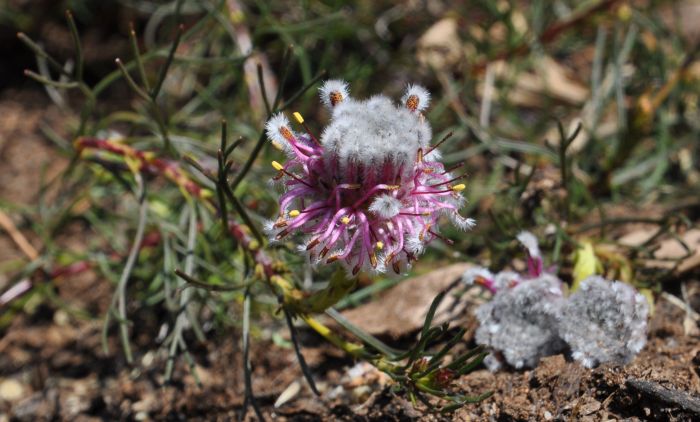
Ecology
Ecology
The Kraaifontein Spiderhead reproduces from seed. Once the seed ripens it is shed from the flowers and falls to the ground. The seeds are tiny, hard-shelled, oval nuts covered by a fleshy skin called the elaisome. The elaisome secretes a chemical substance that attracts ants. The ants carry the seed to their underground nests where they consume the elaisome. The seed remains underground until conditions are right for them to germinate. Serruria furcellata is also adapted to surviving fires by resprouting. Although the above ground parts of the plant are burnt, it has an underground rootstock that survives and sends up new shoots. This is another way of the plant ensuring its survival.
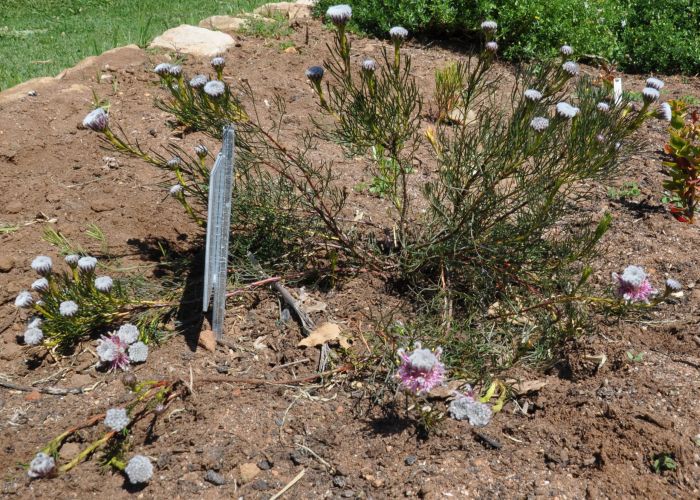
Growing Serruria furcellata
Grow
Serruria furcellata is best suited for a garden that has sandy soil. It is a small shrub, so plant it in your garden among other smaller shrubs or slightly taller growing plants. The plant is a resprouter so it should not mind the occasional pruning to keep it neat and compact. Plant in full sunlight, and a layer of composted mulch or woodchips will help keep the soil cool and provide the plant with nourishment.
Serruria furcellata is grown from cuttings or seed. Tip or heel cuttings are taken during spring or autumn. A rooting hormone is applied to the semi-hardwood cuttings that will stimulate rooting. The cuttings are rooted in a propagation soil mixture of 50% milled pine bark and 50% polystyrene granules. Good rooting of the plant will take place if the propagation greenhouse has good misting and underbench heating. Rooting will take place from 5 weeks onwards. Rooted cuttings are removed from the mist bench and hardened off for 4 weeks. The hardened off cuttings are then potted in a soil medium made up especially for fynbos plants. A suitable well-drained soil mixture consists of composted pine bark, acidic river sand in equal parts loam/topsoil.
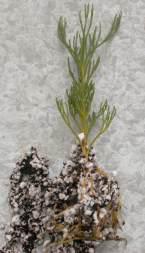
Seed is collected from the mature flowerhead. The seed should be sown in late summer or early autumn. The effects of higher day temperatures and cooler night temperatures play an important role in initiating germination. The seeds can also be exposed to short periods of high temperatures followed by cooling water, which, by mimicking the autumn temperature, stimulates the seed to germinate. The seeds should be treated with a fungicide that prevents pre- and post-emergence damping off. The young seedling or cuttings should be grown in an area that is well ventilated and fairly well lit. The plants should be watered in the mornings and may be fed with an organic-based fertilizer. The young plants can be planted out in autumn or in the cooler months before the onset of summer. This will allow the root system to become established and gives the young plant a good chance of survival.
Credits
Trevor Adams
Kirstenbosch National Botanical Garden
October 2003
updated September 2019
Plant Attributes:
Plant Type: Shrub
SA Distribution: Western Cape
Soil type: Sandy
Flowering season: Spring
PH: Acid
Flower colour: Red, White
Aspect: Full Sun
Gardening skill: Challenging
Special Features:
Horticultural zones







Rate this article
Article well written and informative
Rate this plant
Is this an interesting plant?
Login to add your Comment
Back to topNot registered yet? Click here to register.